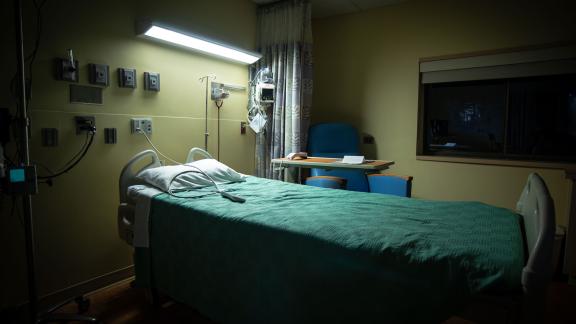Homerton University Hospital NHS Foundation Trust: improving the identification and treatment of sepsis

Homerton University Hospital NHS Foundation Trust has rolled out an innovative approach to medical education which has seen the trust radically improve its identification, treatment and care of patients with sepsis.
Homerton University Hospital NHS Foundation Trust: improving the identification and treatment of sepsis
The challenge and the context
It is estimated that every year, sepsis claims the lives of at least 44,000 people in the UK – five people every hour – and costs the NHS £2 billion, according to The Sepsis Trust.
To improve the trust’s performance on sepsis care, Homerton reviewed its approach to sepsis education, seeking to introduce an interactive and innovative approach that would engage staff, provide easy access to learning and improve early diagnosis and effective treatment.
What the trust did
To achieve this, the trust initiated a quality improvement project led by sepsis nurse specialist Margarida Pacheco. The aim was to create alternative and more effective teaching methods, making best use of electronic resources and social media to create an innovative, fun and contemporary teaching approach.
As a first step, staff at all grades and teams were encouraged to take part in a questionnaire on education methods and the type of approaches that worked best for them.
Based on feedback, Margarida developed a set of different educational methods and presented them to a test group in A&E. Feedback was collected, tweaks made and a final set of products developed and rolled out. This saw seven different teaching aids, projects and channels made available to staff:
The action cards project produced a pocket-sized guide for staff which provides access to the most up-to-date guidelines and protocols. The project was a collaboration between the trust and med-tech company BD.
An escape-room concept was used to develop a simulation exercise in which staff are placed in a room with multiple games and puzzles. By successfully completing the games, staff are then able to treat a deteriorating patient. If they do so correctly, the door to the room opens and they are able to ‘escape’.
The exercise covers key stages in sepsis care, including identification, the national early warning score (NEWS), escalation, SBAR handover, independent actions, A&E assessment, the ‘sepsis six’, treatment, communication skills and conflict.
An online app, iSEPSIS, was developed to give staff access to the latest national and local guidelines on deteriorating patients and sepsis at the touch of a button. The app includes a quiz to test knowledge, enabling staff to build on their CPD wherever they are – on their computer or smartphone. Upon completion of the quiz, the participant receives an email with a certificate and CPD points, aS does their mentor.
Sepsis packs provided staff with a pre-made septic screen pack, which reduced time to treatment in sepsis.
And Fun Sepsis was introduced, providing a new way to bring sepsis education to the shop floor. This included Sebastian, the Sepsis Bunny over Easter, which would ask teams questions about sepsis and distribute Easter eggs. Sepsis Flash, a healthy competition in the emergency department promoting fast treatment of patients with sepsis. And @sepsismaggie, a fictional character on Twitter which posts daily about warning signs and effective ways to spot and stop sepsis. This has encouraged discussion about the condition and, at times, engagement with patients and relatives.
Results and benefits
In its latest Care Quality Commission inspection report, the trust’s sepsis awareness training programme was listed among examples of outstanding practice.
Homerton’s sepsis CQUIN data has improved significantly – on some targets by more than 20 per cent when compared with the same time last year. The benefits have exceeded early forecasts.
- The action cards have reduced the time for escalation using SBAR by one third. There was also a qualitative improvement noted in terms of the messages conveyed when handing over. This is referred to as “Say it right, get it right now”. Doctors reported that nurses calling to escalate concerns were doing so in a more constructive way and with a clear rationale for their concerns.
- The escape room has resulted in a 32 per cent improvement in staff confidence scores when looking after patients with deterioration. So far, 297 members of staff have been trained.
- The app iSepsis has allowed the digitally savvy to explore education in a different format – 128 people have completed the online module on the eCPD app.
- Sepsis packs resulted in a reduction in the time for treatment, from an average of 50 minutes to 32 minutes, and in 23 per cent of cases, to less than ten minutes.
- And the social media and Fun Sepsis activity has fostered more openness among staff, with regular requests for further teaching and support.
Future plans
The action cards and iSepsis have been merged into a single app. It allows for a directorate-specific searches of content, as well as a comprehensive personalised menu for access to both national and local protocols.
The following features will be added:
- access to online real-time voting systems, for surveys
- major incident cascade: ward-specific messages will be sent out with major incident action cards, providing staff with real-time information on their role and actions
- NHS England alerts.
The app will be launched alongside a public-facing campaign on the use of mobile devices in clinical settings. The aim is to explain why the use of mobile phones and other devices is becoming more common in hospitals.
- eCPD app: directorate-specific online modules for the eCPD app are currently under review. In May, paediatrics, neonatal and community modules will join the existing iSEPSIS and obstetric modules.
- Escape Room Sepsis: The Trust will be hosting open days for external candidates to attend the teaching using the Escape Room Sepsis model. The idea is a response to the interest by several hospitals and universities across the country requesting to take part in the education sessions.
- Sepsis Maggie's Bed-Time Story: a book for children to enjoy and parents to learn from.
Takeaway tips
- Engage with key stakeholders.
- Involve the multidisciplinary team, request/accept feedback and build on it.
- Prepared for many trial-and-errors, most projects will go through many review stages until you achieve the desired results.
- Have the patient at the centre of each project, for there lays the strength and reason for any project within the NHS.
- A project of this magnitude only had the impact it did because the Trust and the senior team has adopted a culture of openness and welcoming of change. And sometimes all you need is a black piece of paper a few good ideas a group of people with the drive to see them through.
Want to find out more?
Get in touch with Margarida at margarida.pacheco@nhs.net @sepsismaggie



